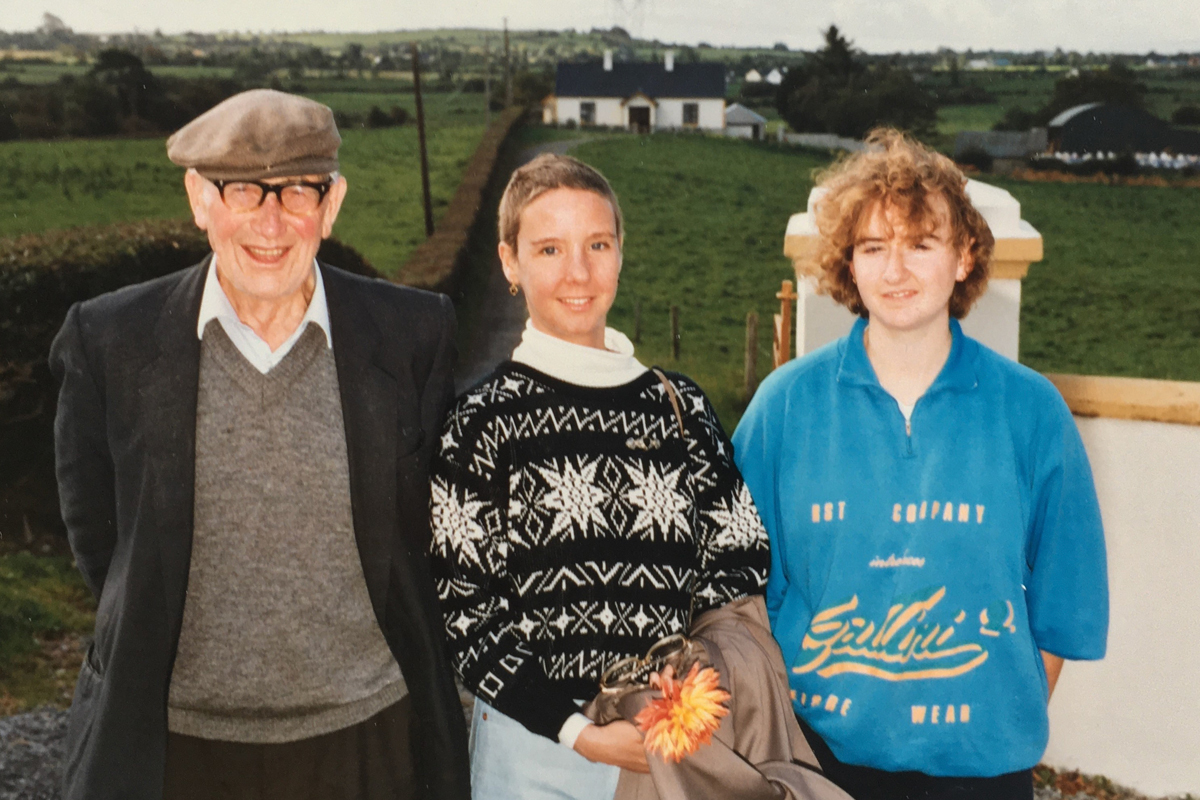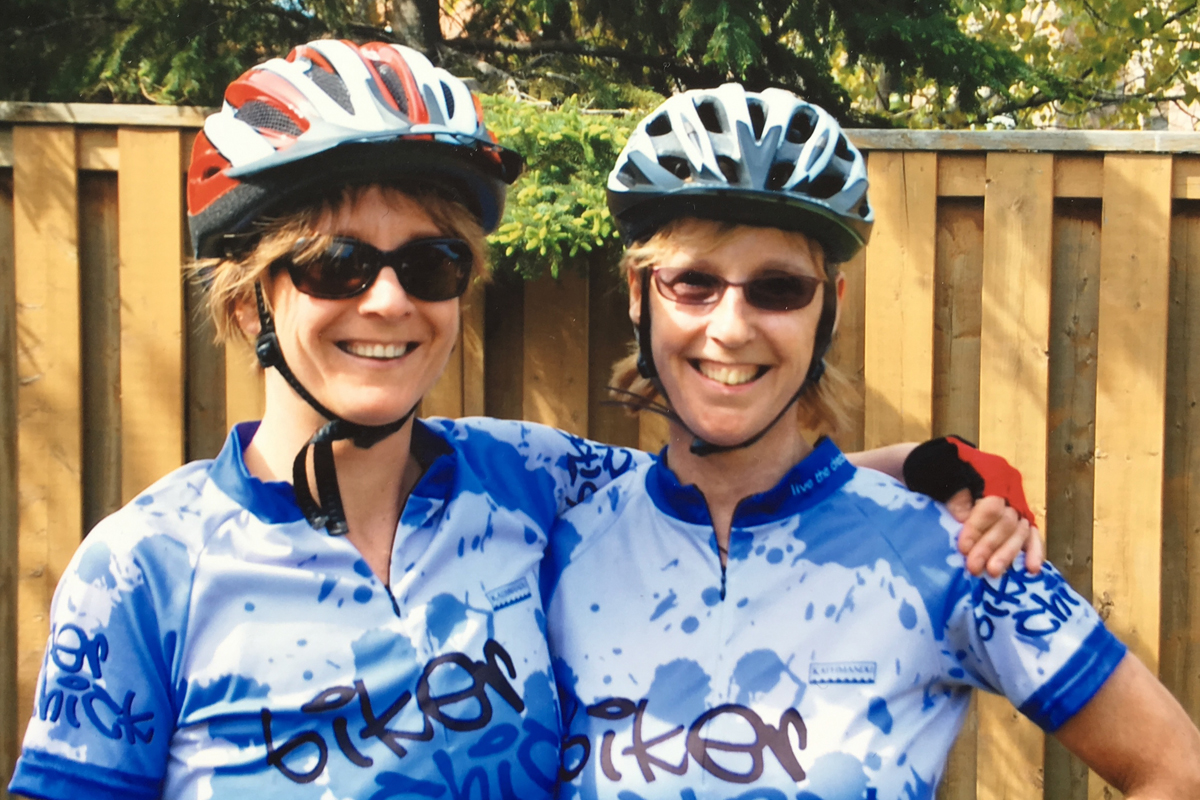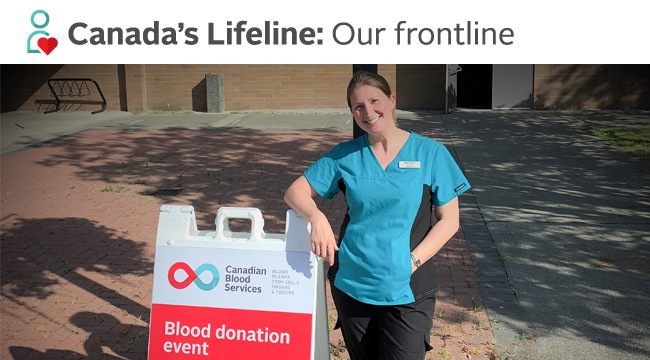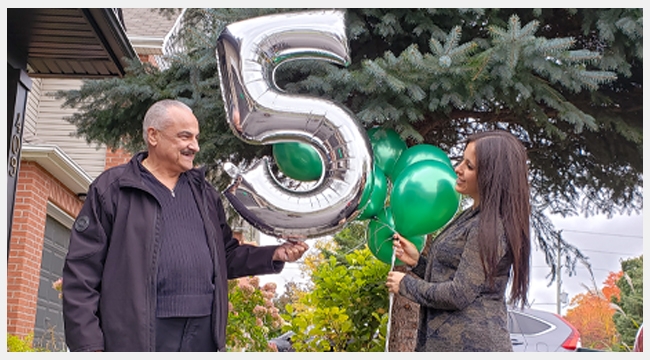Toronto woman still thankful 33 years after stem cell transplant
Cancer survivor Margaret Lynch now helps others as a financial donor to Canadian Blood Services
Decades after she was diagnosed with a rare form of leukemia, Margaret Lynch is thankful to be alive.
In 1988, Margaret was just 30 years old, and looking forward to attending the Winter Olympics in Calgary when she was suddenly beset by strange symptoms ― bruised skin, bleeding gums, and tiredness that went on for months. She was diagnosed with biphenotypic acute leukemia, a rare blood cancer with a poor prognosis.
“I felt like I was facing my mortality much too soon,” Margaret recalls. “The uncertainty and fear that accompanied treatment, and lingered long after treatment ended, prompted questions about life and meaning.”
Participating in clinical trials did not lead to the remission she’d hoped for. And during those three months of treatment, she suffered infections and seizures and eventually landed in a coma. At that point, a stem cell transplant was her only hope of survival.
Unfortunately, 1988 was early days for the science of stem cell transplantation. To qualify for a transplant, patients had to find their own donor, as Canadian Blood Services Stem Cell Registry did not yet exist. Luckily, Margaret’s sister was a perfect match, and her doctor at Princess Margaret Hospital in Toronto agreed to perform her transplant even though her cancer wasn’t in remission.
“My doctor specifically said my procedure would be a research experiment,” says Margaret. “He referred to it as ‘the first of its kind in Canada, with an eight per cent chance of success.’”
Today, Margaret calls her experience a miracle.
“After I received my transplant on May 12, 1988, I waited in my isolation room as engraftment happened and my blood counts started to recover,” she remembers. “Eighteen days later, I walked out of my isolation room, and two days after that I went home. The leukemia never returned.”

Three months after her stem cell transplant in 1988, Margaret Lynch (middle) travelled to Ireland to visit her extended family. She was thankful for a successful transplant and for the opportunity to spend some time with her grandfather McClearn (left) and cousin, Rosemarie McClearn (right).
Three quarters of patients depend on unrelated donors
Margaret knows how fortunate she was that her sister was a transplant match.
“Many patients aren’t as lucky as I was,” she says. “That’s why the stem cell registry is so critical. For people with leukemia or other blood disorders, stem cells from a complete stranger may be their only chance of survival.”
Every year, hundreds of Canadian patients require lifesaving stem cell transplants to treat more than 80 diseases and disorders, including blood cancers. Unfortunately, three quarters of those patients will not find a match within their own families. To survive, they’ll turn instead to Canadian Blood Services Stem Cell Registry with its database of healthy volunteer donors and its connections with similar registries around the world.
Patients are more likely to find a donor from within their own ancestral group. Yet those with Indigenous, Asian, South Asian, Hispanic, Black Canadian, and mixed-race backgrounds often find it challenging to find a match, because prospective donors from these groups make up only about a third of the total on Canadian Blood Services’ registry. That’s why our recruitment efforts are focused on people of diverse ethnic backgrounds, especially those who are also optimal donors — males aged 17 to 35.
Donating cord blood — the blood that remains in the umbilical cord and placenta after the birth of a healthy baby — is another way to help patients. Blood from this source is rich with stem cells that can be used for transplant. Since Canadian Blood Services’ Cord Blood Bank launched in 2013, more than 34,000 mothers have donated cord blood, improving the odds for those patients seeking an unrelated donor.

Margaret Lynch, right, with her sister Mary, who donated her stem cells for Margaret’s transplant in 1988. Margaret is an avid cyclist. Every year she trains for and rides in a 200-km fundraising event for Toronto's Princess Margaret Hospital, where she had her transplant.
Giving back
Margaret still feels a sense of awe whenever she reflects on her experience. “Nobody really knows why my transplant worked,” she says. “On paper, it shouldn’t have. It’s an odd feeling to live through something that shouldn’t have worked, and not understand why.”
Since her transplant, giving back to society has been a priority. Now semi-retired, she had a successful career in the non-profit sector, and one of her favourite jobs was working as the director of digital marketing for the hospital that saved her life.
“I’m an avid cyclist, and each year I train for and ride in a 200-km fundraising event for that same hospital,” she says. “It’s my way of giving back and staying healthy.”
Because of her medical history, Margaret is not eligible to donate blood or join the stem cell registry, but she always wanted to help other patients. That’s why she registered to donate organs and tissues. She also donates financially to several organizations each year, including Canadian Blood Services.
How do financial donations to Canadian Blood Services help patients?
“During my time in hospital, I received 157 units of blood,” she says. “Each unit represented a blood donation from someone I didn’t know. Those transfusions kept me alive during treatment, so supporting the work of Canadian Blood Services to facilitate blood and stem cell donations across Canada is a no-brainer.”
Margaret also writes about her experience and encourages other Canadians to help patients in need.
There are many ways to support Canada’s Lifeline. You can donate blood or plasma, or register to donate cord blood if you’re expecting a baby. You can also join the stem cell registry, register to donate organs and tissues or give a one-time or recurring financial donation. All these gifts have the power to save and improve the lives of patients.




